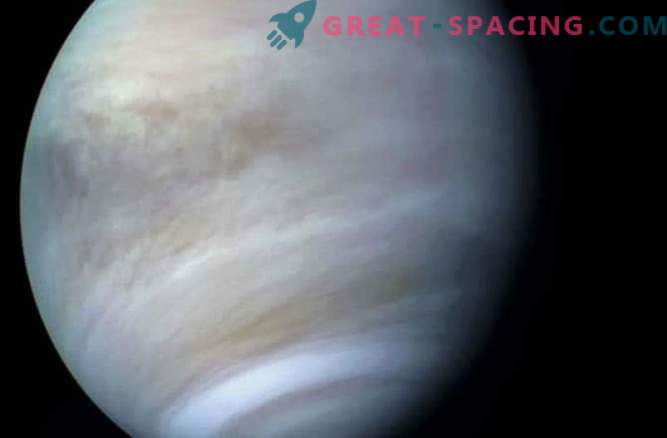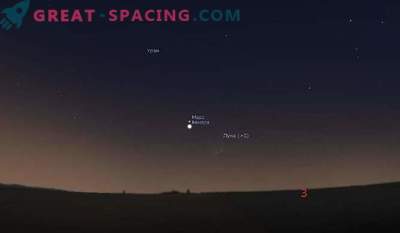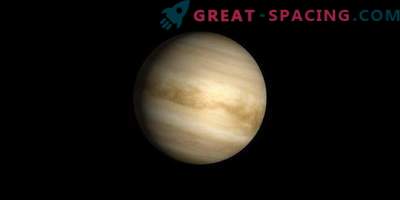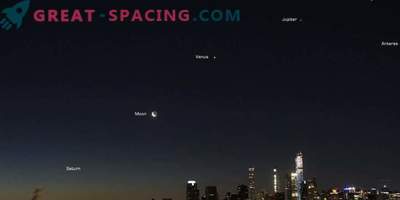
If you see a bright spot above the horizon at dawn, do not panic. This is not a UFO, maybe it's just Venus.
Planetariums, observatories, weather forecasters, and even police stations may receive a flurry of calls in the coming days and weeks regarding a strange bright spot dominating the pre-dawn eastern sky. Sunrise comes later and later, and more and more people can see this bright morning object.
But this is only the planet Venus at the initial stage of the picturesque morning appearance, which will continue in September and October. In addition to Venus, Jupiter will join in to perform the magnificent morning sky tango.
Venus made the transition from the evening sky to the morning on August 15, appearing 45 minutes before sunrise Sun. By early September, it appears before dawn at approximately 4:50 am local time. By the end of the month, the planet will appear 2, 5 minutes earlier each time than the previous morning. From September 21 to October 26, its sunrise will be no later than half past three in the morning, and the planet will shine in total darkness for more than two hours before the eastern sky begins to lighten.
During the whole month, Venus will shine more and more, and early passersby will most likely be surprised by this luminous diamond shining object, which unexpectedly exploded the predawn scene. By the end of September, Venus will firmly take the place of the forerunner of dawn.
At the same time, for the second time in 2015, Venus and Jupiter will participate in a close conjunction. True, this time they will be divided by more than a degree, and Venus will be located to the right and below Jupiter, but it will shine 10 times brighter than the gas giant. Therefore, we get two mysterious bright points for the price of one! By the end of October, the rise of Venus will begin four hours before the sun, and by the time the star appears, the angle between them will be almost 40 degrees.
Quick Jump
Some amateur astronomers may wonder why Venus becomes a dazzling morning object faster compared to the evening passage, which seems to last many days, weeks, and sometimes even months.
The difference between this passage and the evening depends on the position of Venus relative to Earth. When Venus moves from the morning sky to the evening sky (called the top connection), it is located on the opposite side of the Sun relative to the Earth.
Being at a distance of 257 million kilometers from the Earth in this case, Venus moves relative to the stars with the lowest speed. Moreover, it moves in the same visible direction relative to the stars as the Sun - to the east. Therefore, in those days when the planet approaches and moves away from the point of the upper conjunction, it is in the bright light of the Sun.
During the evening passage, Venus moves far enough from the Sun, it can be glimpsed only for a short time low over the western horizon after sunset. After only a few weeks, she climbs high enough to become visible in the evening sky.
But in the morning passing is different. On August 15, Venus was at the point of the lower junction, which means its passage between the Earth and the Sun. It was only 40 million kilometers from our planet - more than six times closer than at the upper junction. Therefore, it seems that it moves much faster on the background of stars. And, most importantly, it seems to the observer from Earth that Venus and the Sun are moving in opposite directions. While the Sun “waddles” to the east, Venus “flies” to the west, which allows literally breaking into the morning sky and becoming a predawn beacon in just a week or two, unlike many weeks in the evening. And finally, because it is much closer to the Earth, the morning appearance of the planet occurs at the moment of its greatest brightness.
Venus Crescent
Best of all, the phases of Venus can be viewed with a telescope right now. Observers using optics can enjoy a wonderful huge crescent. You can see the crescent of Venus even with 7x50 binoculars. In the coming weeks, it will slowly thicken and shrink as the planet moves away from Earth. At the beginning of November Venus will resemble a half of the Moon. Later that month, until the very end of autumn and early winter, the planet will visually turn into a tiny, but dazzling, sparkling bulging disc.
Therefore, if you hear about the appearance of the morning UFO in the coming weeks, know - most likely, this is the appearance of Venus!










































